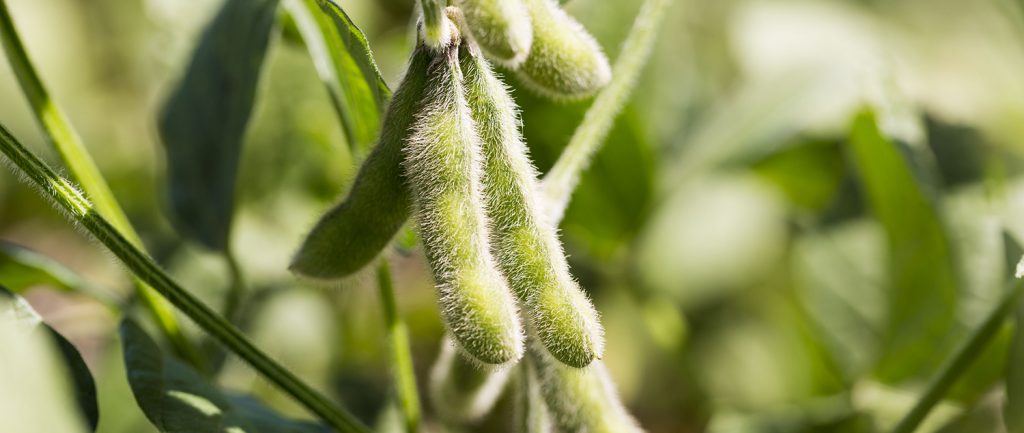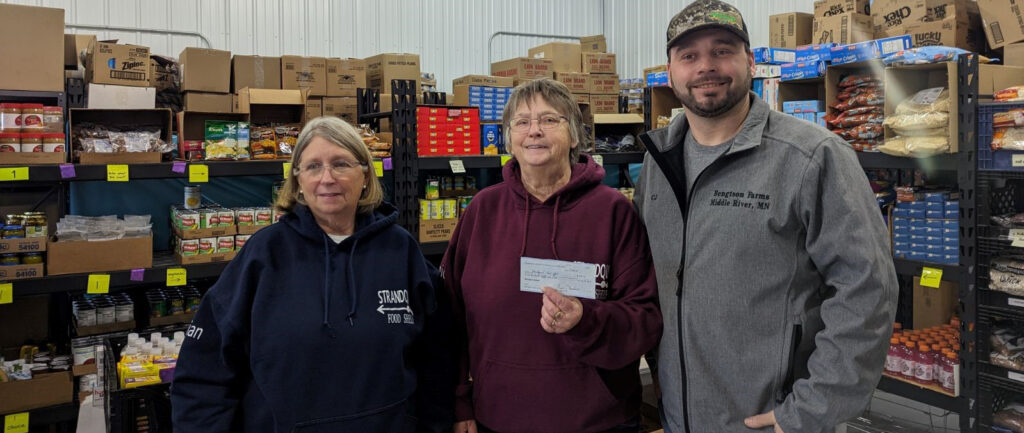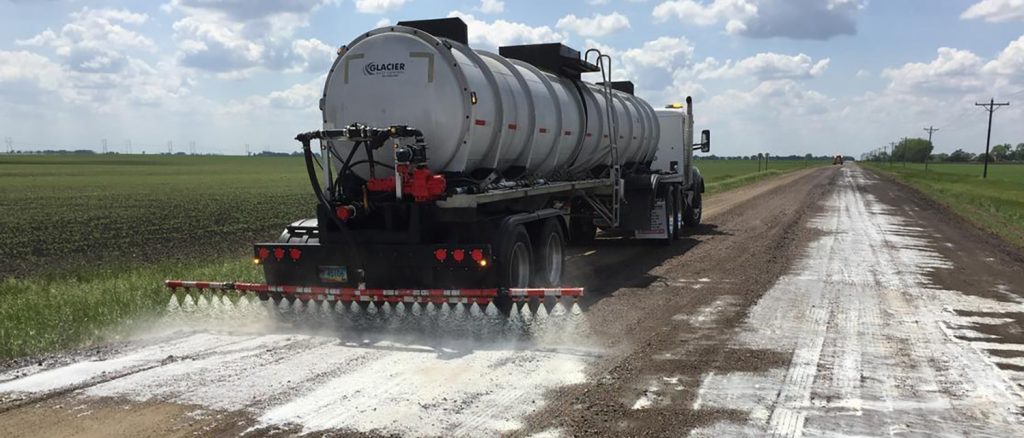More than 700 attendees from more than 53 countries gathered in Kansas City, M.O., for the 6th Annual U.S. Soy Global Trade Exchange & Midwest Specialty Grains Conference & Tradeshow. The event took place from Aug. 28-30.
This year for the first time, half of the Minnesota Soybean Research & Promotion Council (MSR&PC) booth was devoted to the essential amino acids (EAA) message. MSR&PC, in conjunction with the soybean councils from North Dakota and South Dakota, has conveyed that message to overseas customers during the past six years of annual trips by grower leaders.
Representing MSR&PC were Chair Patrick O’Leary, and Directors Keith Schrader and Cole Trebesch.

“Both new and some earlier-visited customers stopped at the booth to ask thoughtful questions concerning how the superior essential amino acid concentration of northern states-origin soybeans offsets their sometimes slightly-lower crude protein level,” Minnesota Soybean Director of Market Development Kim Nill says. On Tuesday, Aug. 28, international trade teams took part in field tours in Kansas and Missouri. As teams headed out to the farms, U.S. Department of Agriculture’s (USDA) Foreign Agricultural Service (FAS) Deputy Administrator Mark Slupek reiterated, “It’s a great time to buy U.S. Soy,” stressing the sustainable production practices of U.S. farms.
That evening, the U.S. Soybean Export Council (USSEC) and Midwest Shippers Association co-hosted an opening reception at the Abbott in Kansas City’s Crossroads district. The gala offered participants from visiting countries and the U.S. with an opportunity to visit informally and connect prior to the event.
On Wednesday, Aug. 29, the event officially kicked off.
Administrator Ken Isley of the U.S. Department of Agriculture’s (USDA) Foreign Agricultural Service (FAS) provided opening remarks for the conference. Isley spoke of the need for free, fair and reciprocal trade and told attendees: “The U.S. Soy industry is open for business. We have product to sell.”
Emily French, managing director of ConsiliAgra, provided a world soy and grain supply and demand outlook for 2018-19, saying world economic growth remains favorable. According to French, world soy consumption is 1 MMT per day.
Following these presentations, commodity learning sessions were held as specialty teams met for their Trade Team Invitational (TTI) meetings.
Tanner Ehmke, manager of CoBank’s presentation “Blockchain: Shaping the Future of Agriculture & Trade,” described blockchain as a type of distributed or shared ledger that makes cryptocurrency possible.
“Blockchain is a tool to potentially make business easier,” he said, “but it cannot replace relationships.”
Sam Sexhus, group vice president of BNSF Railway – Agricultural Products, spoke about how U.S. grain production remains at historically high levels and how U.S. infrastructure is the best in the world, followed by Brian Buckallew, business manager – specialty soybeans for Corteva, who spoke about the value of high oleic soybeans for the soybean crush industry.
Alexa Potocki, assistant to the Chief Innovation Officer at Alltech, spoke about the yearly Alltech Feed Survey, now in its seventh year. Three factors, she said, can affect feed production: poor efficiencies, climate change, and competing requirements. Last year, 1.07 billion metric tons of feed was produced worldwide.
USSEC consultants Dr. Gonzalo Mateos of Spain and Dr. Neneth Reas of the Philippines spoke talked on the topic of how the nutritional value of soybean meal is affected by the origin of the beans.
The day’s final event was a panel discussion, “The Impact of the China Tariffs and a Review of Shifts Underway in the Worldwide Grain & Soy Market,” featuring Dr. Wally Tyner, professor of applied agricultural economics at Purdue University; Mu Yan Kui, vice chairman of the Yihai Kerry Group; and the five USSEC regional directors: Paul Burke (North Asia); Brent Babb (EU/MENA); Kevin Roepke (Americas); Timothy Loh (Southeast Asia); and Ed Beaman (Senior Director – Basic Market Development and Acting Regional Director – Asia Subcontinent). USSEC Senior Director – Market Access Roz Leeck moderated the panel.
On Thursday, August 30, the day began with an early riser session, “Global & U.S. Market Outlook for Soy Foods / Human Utilization.” Speakers from various USSEC regions gave an overview of the current market situation in their parts of the world and included Dr. Hyung Suk Lee, USSEC Country Director – South Korea; Masi Tateishi, USSEC North Asia Regional Human Nutritional Manager & Japan Human Nutrition Director; Dr. Dady Maskar, USSEC Technical Consultant HU – Indonesia; Joanna Qian, USSEC Marketing Specialist for Value-Enhanced; Nayeli Vilanova, USSEC Director for Food and Oil Programs – Worldwide. Bob Sinner, president of SB & B Foods, moderated the panel.
Dr. Mark Messina, executive director of the Soy Nutrition Institute, next spoke on the topic of “Bringing Back the Soy Health Halo – Recent Research in Soy in Human Health.” Soy, he said, is much higher in quality than any other plant protein.
This day’s sessions focused on specialty soy, while the commodity soy trade team invitational took place.
A panel discussion pertaining to the “U.S. Supply Chain for Identity Preserved Handling of Specialty Soybeans” was up next. DuPont biotechnology regulatory lead Azmy Azmy; president and CEO of MCIA Fawad Shah; and Midwest Shippers Association chairman Andy Bensend spoke. Former MSA chairman Roger Mortenson served as moderator.
Benjamin Brooks, vice president of Beryllium, presented, “How to Manage the Growing Threat of IT Fraud in Global Trade.”
The “Inland Intermodal – How US. Container Shippers are Facing the Latest Logistics Challenges” panel discussion featured speakers Thomas Mershon, export merchandiser from the Lansing Trade Group; Darwin Rader, international marketing manager for Zeeland Farm Services; and Chris Arnold, senior manager at The Scoular Company. The session was moderated by MSA president and CEO Bruce Abbe.
Kansas State University professor and director of the Pet Food Center at KSU Dr. Greg Aldrich discussed the latest trends in the booming pet food market.
The conference’s final session, “The U.S. Ag Industry – Your Partner in Feeding the 21st Century” featured speakers Derek Haigwood, USSEC chairman and United Soybean Board (USB) director; SB & B’s Sinner; Michael Ricks, senior portfolio manager with Cargill’s World Trading Group; and Jim Stitzlein, manager of market development for Consolidated Grain & Barge and U.S. Grains Council chairman. USSEC CEO Jim Sutter served as moderator.
FAS’ Slupek provided closing remarks, focusing on cooperation, saying, “Even in these tough trade times, we need to keep the trade conversation going.”
This year was the first time that the TTI was held concurrently with the GTE. Alternating commodity and specialty soy learning sessions with the GTE aimed to help international trade teams to better deal with changing time zones.
The TTI helps to build personal relationships between buyers and sellers and is USSEC’s annual buyer / seller speed meeting. Exporters met directly and privately for 30 minutes with trade teams broken up by country and buyer type. These brief meetings help to quickly connect exporters to qualified international buyers. More than USSEC 220 trade team members from the trade teams met with exporters over the two-day TTI.







